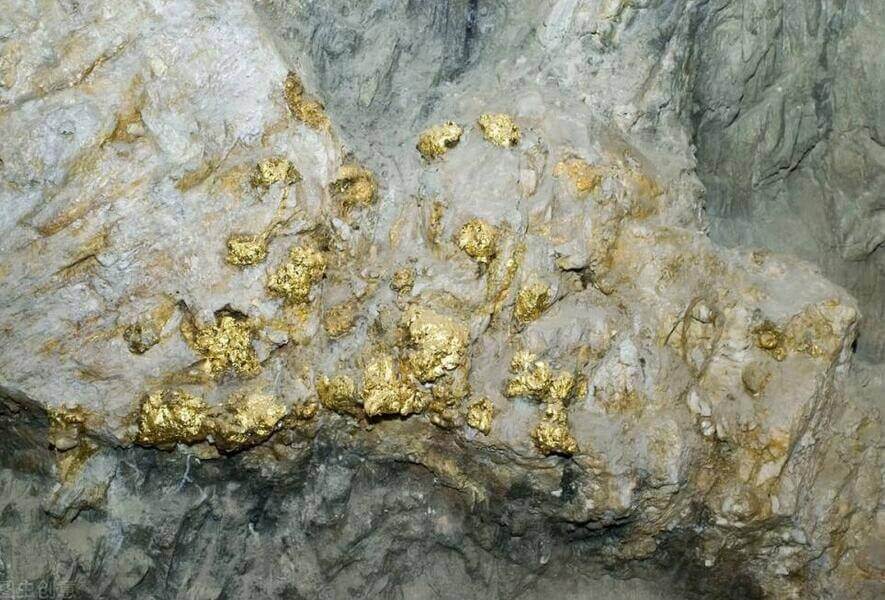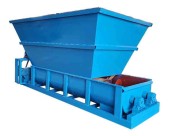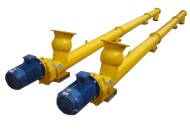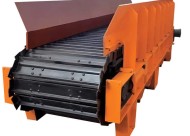The average content of gold in the crust is 4×10-9. The industrial minerals of gold mainly include natural metals and intermetallic compounds, such as silver-gold ore (AgAu), gold-silver ore (AuAg) and so on. In nature, gold often coexists with pyrite, arsenopyrite, tetrahedrite, chalcopyrite, galena, sphalerite, and stibnite. Since more than 98% of gold in gold deposits usually exists in the state of elemental gold, the phase analysis of gold is not to find out the phase state of gold itself, but to find out that the gold is in a bare, semi-bare state and in various carrier minerals. The amount in the inclusion state. Phase analysis of gold provides three analytical procedures. The first analysis process is suitable for phase analysis of gold in geochemical samples, which can determine bare and semi-bare native gold, carbonate-coated gold, lead-zinc-copper sulfide-coated gold, limonite-coated gold, and pyrite. Coated gold and six phases such as quartz and silicate-coated gold. The method can also be used for low-grade gold ores, and the second analytical procedure is suitable for ores with higher gold content, which can determine the four phases of single natural gold, conjoined gold, sulfide-coated gold, and silicate-quartz-coated gold. The third analytical procedure is the determination of cyanidable gold, which is mainly to determine the extent to which gold-bearing ores can be extracted by cyanidation.
Phase Analysis of Gold in Geochemical Samples
1. Method Summary
Use I2-NH4I solution to leaching bare and semi-naked native gold, the residue is first dissolved in carbonate with dilute HC104, and the encapsulated native gold is dissolved and separated with I2-NH4I solution. Determination of carbonate-coated gold residues The lead-zinc-copper sulfide minerals coated gold were leached with bromine-methanol. After the residue was dissolved in HCl(1+1) containing SnC12 to remove limonite, it was leached with I2-NH4I solution and coated with it. After calcining at 480-500 ℃ for 1 h, the pyrite-coated gold is leached with I2-NH4I solution, and the final residue is quartz and silicate-coated gold. After phase separation, the leaching solution of each phase was determined by the FAAS method or graphite furnace atomic absorption (GFAAS) method depending on the content. When the total amount of Au is 10×10-9, the phase-separated determination can be carried out, and the determination limit of each phase is 10-9. This method is applicable to the determination of the storage state of Au in general gold ores and geochemical exploration samples.
2. Reagent preparation
Leaching agent Au I 50g/L I2-100g/L NH4I solution. Leaching agent Au II HC104 (1+99). Leaching agent Au Ⅲ Bromo-methanol (5+95). Leaching agent Au Ⅳ 10g/L SnCl2·2H2O HCl(1+1) solution.
3. Analysis steps
Step 1: Determination of bare and semi-bare natural gold.
Weigh 10 g of the sample with a particle size of less than 0.075 mm into a 250 ml conical flask. Add 50 mL of leaching agent Au I, shake at room temperature for 1 h, filter with suction, and wash the residue with water for 2 to 3 times (transfer the residue together with the filter paper to the original conical flask). The filtrate was transferred to a 300mL beaker, and most of the I2 was removed by evaporation, then HN03 was added to drive up the I2, and evaporated to dryness. Add 20mL aqua regia (1+1), boil for a while, transfer to a 200mL conical flask, and dilute with water to about 90mL. A piece of foam (about 0.1 g) was put in, shaken at room temperature for 30 minutes to enrich and separate Au, and Au was determined by FAAS method or GFAAS method depending on the content.
Step 2: Determination of carbonate-coated gold.
Add 150 mL of leaching agent Au II to the residue, heat on a boiling water bath for 1 hour, and add dilute HC104 dropwise if necessary to keep the pH of the solution at 1-2. After cooling, suction filtration, wash the conical flask and the residue with water 2 to 3 times, and keep the filtrate. Add 50 mL of leaching agent Au I to the residue, shake at room temperature for 1 h, filter with suction, combine the two filtrates, and measure Au according to step 1.
Step 3: Determination of lead-zinc-copper sulfide minerals encapsulated gold.
To the residue was added 50 mL of leaching agent Au III. Shake at room temperature for 1 h. Suction filtration, wash with water until the filtrate has no yellow color, add 5mL HN03 to the filtrate, evaporate on a low-temperature electric furnace, remove Br2 to dryness, add 20mL aqua regia (1+1), and measure Au according to step 1.
Step 4: Determination of limonite encapsulated gold.
Add 70 mL of leaching agent Au IV to the residue in the upper section (continuously add SnCl2 solution dropwise to keep the solution yellow-free), and shake at room temperature for 1 h. Suction filtration, wash with HCl (1+99) 2 to 3 times, and discard the filtrate. Add 60 mL of leaching agent Au I to the residue, shake at room temperature for 1 h, and measure Au as in step 1 below.
Step 5: Determination of pyrite encapsulated gold.
The residue is incinerated in a 50mL porcelain crucible, and fired in a muffle furnace at 480-500°C for 1 h. After cooling, it was transferred to a 200 mL conical flask, 50 mL of leaching agent Au I was added, and the solution was shaken at room temperature for 1 h. The same as step 1 below for Au determination.
Step 6: Determination of quartz and silicate-coated gold.
The final residue is ashed in a 50mL porcelain crucible, and fired at 650°C for 20-30min. After cooling, transfer the residue into a polytetrafluoroethylene beaker, add 10 mL of HF and 10 mL of HNO3, heat it slightly for 1-2 hours, and then evaporate to dryness. Then 10 mL of HF and 10 mL of HNO3 were added, heated and left overnight, and evaporated to dryness the next day. Add 30 mL of aqua regia (1+1), heat it to a slight boil for 30 min, to a volume of about 20 mL, remove it, cool it and transfer it to a 200 mL conical flask with water, dilute to 90 mL, and measure Au as in step 1 below.
Precautions
When doing the phase analysis of Au in the geochemical exploration sample, 10g/L I2-20g/L NH4I solution can be used to replace the leaching agent Au I. The amount of foam added can be about 0.1 g.
LATEST PRODUCTS
Twin Screw Feeder
【Feeding Capacity】 10-160 t/h【Power】 2.2-…
Tubular Screw Conveyor
【Capacity】6-50 m3/h【Procesible Material】 …
Heavy Plate Feeder
Capacity: 100-240 m3/h Power: 15-45 kW Speed: 0…










